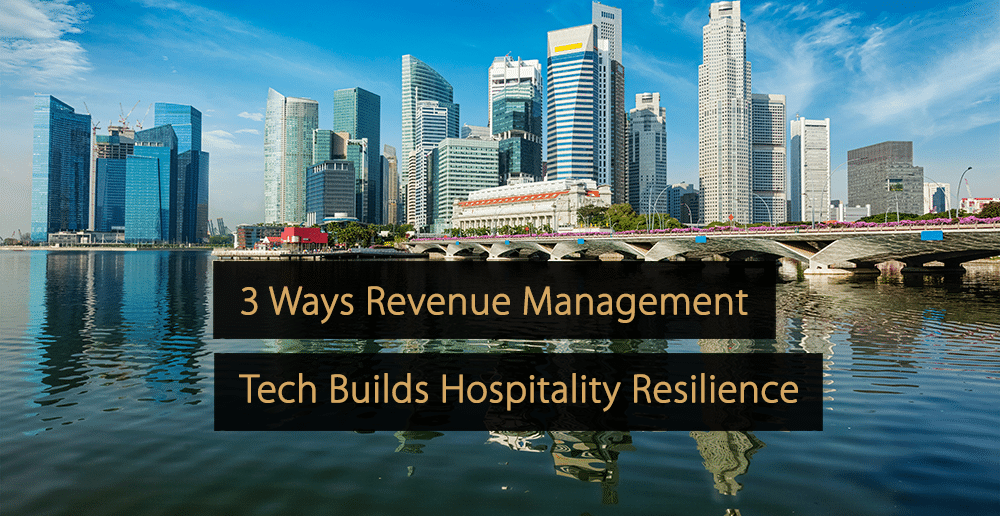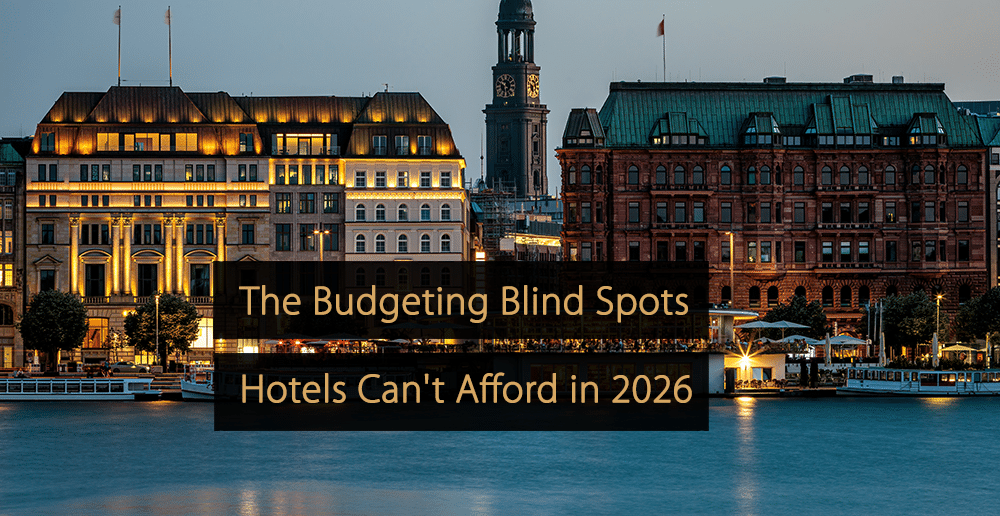Question for Our Revenue Management Expert Panel:
Are hotels ready to effectively implement dynamic pricing for ancillary services? Are guests ready to accept fluctuating prices for ancillary services? (Question proposed by Pablo Torres)
Industry Expert Panel
Our Industry Expert Panel exists out of professionals within the hospitality & travel Industry. They have comprehensive and detailed knowledge, experience in practice or management and are forward-thinking. They are answering questions about the state of the industry. They share their insights on topics like revenue management, marketing, operations, technology and discuss the latest trends.
Our Revenue Management Expert Panel
- Pablo Torres – Hotel Consultant
- Tamie Matthews – Revenue, Sales & Marketing Consultant, RevenYou
- Massimiliano Terzulli – Revenue Management Consultant, Franco Grasso Revenue Team
- Niko Krauseneck – Founder, RevenueRebel
- Mariska van Heemskerk – Owner, Revenue Management Works
- Heiko Rieder – Senior Vice President Commercial & Distribution, Step Partners Europe
- Dermot Herlihy – Group Revenue Director, Orascoma Hotels Management
- Silvia Cantarella -Revenue Management Consultant, Revenue Acrobats
- Chaya Kowal – Director of Revenue Management, Potato Head Family
- Nikolas Hall – Owner, N. Hall Consulting
- Ask Our Panel a Question
- Join Our Expert Panel
“Dynamic pricing has revolutionised room revenue management, but when it comes to other ancillary services, hotels still have a long way to go. Operational readiness and guest perception remain key challenges.
Many hotels hesitate due to operational constraints. Implementing real-time price changes requires seamless integration between booking engines, POS systems, and staff training, which is something not all properties are prepared for. Furthermore, fluctuating prices for spa treatments or F&B could be perceived as unfair by guests, especially in a luxury setting where consistency is expected.
Yet, guest acceptance is growing. The rise of surge pricing in ride-sharing and airline baggage fees has conditioned travellers to expect price variations. Hotels that communicate value, offering discounts during off-peak hours or bundling services. That way, they can increase ancillary spend without alienating guests.
Ultimately, success in dynamic pricing for ancillaries depends on transparency, personalisation, and operational efficiency. Hotels ready to embrace these factors will unlock significant revenue potential.”
“I agree that we should look into managing the prices of extra services like spa treatments and food to make more money. However, I’m concerned that we might not be ready yet.
First, can our current computer systems handle changing these prices every day? We need to make sure they can keep up. Second, are our revenue managers trained to use these systems and change prices without a full Revenue Management System?
Third, how will we explain price changes to our guests? For example, how do we tell someone that the spa treatment they wanted on Saturday is more expensive than the one they saw on Tuesday, and that the price might change again? We need a clear message.
Finally, can our departments handle a sudden rush of customers if we change prices? Do they have enough staff and plans in place to handle more people at short notice?
I think we should start by testing simple price changes, like different prices for weekdays and weekends, or peak and off-peak times. This will give us time to make sure our technology and our team are ready for more complex price changes in the future.”
“I believe it’s the natural evolution of things. Guests are already accustomed to dynamic price fluctuations in airlines, hotels, and car rentals, so they would be ready to accept fluctuations in ancillary services as well, such as the spa, restaurant, or parking.
Perhaps it’s the hoteliers who are less prepared? Already today, it’s not a given that hoteliers accept revenue management for rooms, let alone for ancillary services. And the technology that would allow dynamic pricing for ancillary services is still lacking, so dynamic pricing for extras is struggling to emerge. However, it’s inevitable that sooner or later, hoteliers will realise the immense potential of applying dynamic pricing to extra services, and as a result, technology will adapt.”
“Most hotels aren’t fully ready to roll out dynamic pricing across all ancillary services. While many already adjust prices seasonally, for example, charging more for breakfast or spa entry during peak times, true real-time dynamic pricing is a different game. By smartly adjusting prices based on guest segments in-house, you can yield great results without full dynamisation.
The bigger opportunity? Optimising menus and occupancy in spas and F&B outlets. Instead of just fluctuating prices, hotels should look at maximising occupancy and capacity, like offering in-room massages when the spa is full. It’s not just about charging more; it’s about getting more out of what you have.
As for guests, they’ve accepted variable pricing for rooms and flights, but seeing spa treatments or dinner prices jump mid-booking might feel like a cash grab. The key is to be smart about it; test demand-based adjustments in ways that feel natural and justified.”
“I think in the right markets, with lots of demand, this would work. But in markets with less demand and fewer hotels, it might be more challenging to optimise on all ancillary services. I work with many clients and it is not possible to just follow one pricing method.”
“When consumers accept dynamic pricing for rooms, they will also do the same for additional services in the hotel, as it’s already accepted in several other consumer touchpoints outside of our industry (e.g., car parking). Technology already enables the practical and efficient implementation of dynamic pricing for extra services. There are many examples where this works seamlessly, such as offering remaining capacity for spa treatments depending on the time of day.”
“I am an avid supporter of this opportunity, but unfortunately, dynamic pricing for spa or food & beverage often raises concerns about perceived value and client expectations. As a result, it faces significant operational constraints, and attitudes are often the source of the reluctance. But there has to be a turning point; we are becoming more accustomed to price changes in other areas, like ride-sharing with Uber or airline seats and baggage costs.
One strategy might be to adopt a form of dynamic pricing and bottle it in a different way. Charge more for spa services on the weekends, for instance, but advertise them as a premium experience; include a value-add.
Systems also play a part here; the systems used in ancillary service areas are not as advanced, and it’s also important to consider the confidence levels among departmental users who are adapting to such pricing changes.
In short, while the industry is not fully ready yet, the direction is clear. With the right IT stack, operational training, and guest communication, dynamic pricing for ancillaries can be a significant source of revenue.”
“Hotels are used to managing the dynamic pricing of ancillary services, and I don’t foresee any major difficulties. Upselling rooms with variable prices is easily accepted by customers when it is normally proposed close to arrival, following pricing rules that take into account both occupancy and demand.
As for other services, I believe it all depends on how it is presented: managing price fluctuations for ancillary services can easily be disguised through discounts related to, for example, the service-time (for F&B), the specific treatment (in the case of the SPA), or a combination of both, taking into account both availability and demand for the specific service. However, upselling does not necessarily have to be linked to a discount. If we offer a service during a peak time, the key is to be transparent about the reasoning and encourage the customer, perhaps by offering some added value that gives the perception of a higher quality service.”
“Dynamic pricing for ancillary services is something hotels should absolutely implement, but many properties aren’t quite there yet. One of the biggest challenges is data integration – without proper systems in place, it’s hard to track demand and optimise pricing effectively.
Operations teams also need time and training to adapt, and there’s still uncertainty about how guests would react to fluctuating prices. Budget constraints can also be a barrier, especially for independent hotels, whereas chain hotels tend to have an advantage with existing technology and structured training programs.
For spas, a dynamic pricing approach could work well by offering lower rates during off-peak hours, like early mornings, or introducing early-bird pricing for guests who book treatments before arrival. Room upgrades, on the other hand, are easier to implement if front office teams are well-trained to offer them at the right moment. That said, dynamic pricing is already widely accepted in the wellness industry – apps like ClassPass adjust pricing for gym classes, Pilates, and massages based on demand. If communicated properly to guests, this could work well in hotels, too. Of course, different geographic markets would react differently, so hotels need to strategise accordingly. This approach can also apply to meetings and events, adjusting rates for weekdays versus weekends.
For F&B, strategy depends on the hotel type. A resort in a dining-heavy area could use dynamic pricing to encourage guests to stay for sunset cocktails with special pricing. Meanwhile, a city hotel with peak dinner hours and outside guests could implement tiered pricing – offering discounts during off-peak hours and premium pricing for peak times. Guests who really want that prime-time table might be willing to pay more!
Overall, dynamic pricing for ancillary services has huge potential if implemented thoughtfully. With the right technology, staff training, and clear communication to guests, hotels can optimise demand and drive more revenue – just like other industries already do. It’s all about understanding the market, adapting strategies, and making it a win-win for both the hotel and the guest.”
“In my experience, dynamic pricing has already proven its value in room revenue management, and I see its expansion into ancillary services as a natural next step. From my observations of consumer behaviour, guests are increasingly willing to accept fluctuating prices, especially as personalised pricing and predictive personalisation become standard in travel and with travel-related tools.
Travellers are already accustomed to price variations in flights, rideshares, and event tickets, so the idea of dynamic pricing for dining, spa treatments, or room upgrades isn’t as foreign as it once was. What truly matters is how it’s presented. If a guest understands that booking a spa treatment at a quieter time saves them money, or that an AI-driven offer provides them with an upgrade at a price tailored to their past booking patterns, they are more likely to embrace it rather than resist it.
From what I’ve seen, predictive personalisation plays a crucial role in this shift. When hotels leverage guest history and behaviour to create offers that feel tailored, such as a discounted upgrade for a repeat guest who usually books premium rooms, pricing no longer feels arbitrary. Instead, pricing becomes an intuitive part of their experience, enhancing both satisfaction and spend.”
Ask a Question & Join Our Expert Panel
Would you like a question to be answered by our Industry Expert Panel? Or would you like to join our community of experts and share your experience, insights, and knowledge with fellow industry professionals? Via the buttons below you can submit a question or submit a request to become part of our expert panel.
More Tips to Grow Your Business
Revfine.com is the leading knowledge platform for the hospitality and travel industry. Professionals use our insights, strategies, and actionable tips to get inspired, optimize revenue, innovate processes, and improve customer experience.Explore expert advice on management, marketing, revenue management, operations, software, and technology in our dedicated Hotel, Hospitality, and Travel & Tourism categories.

















Leave A Comment